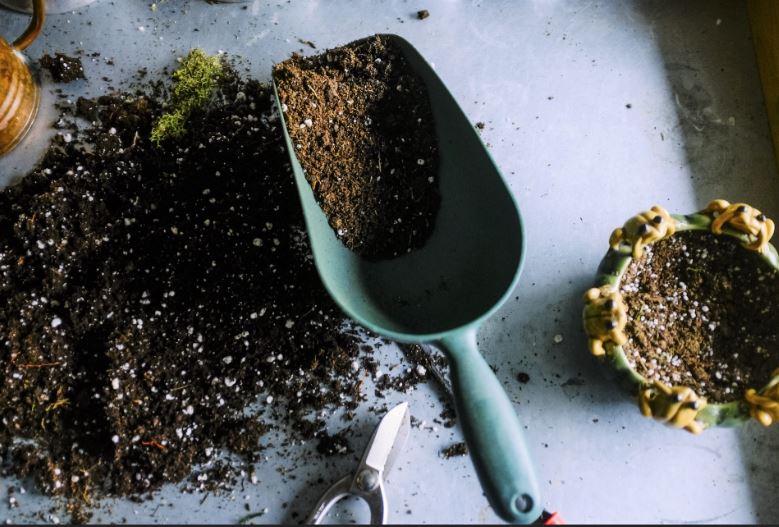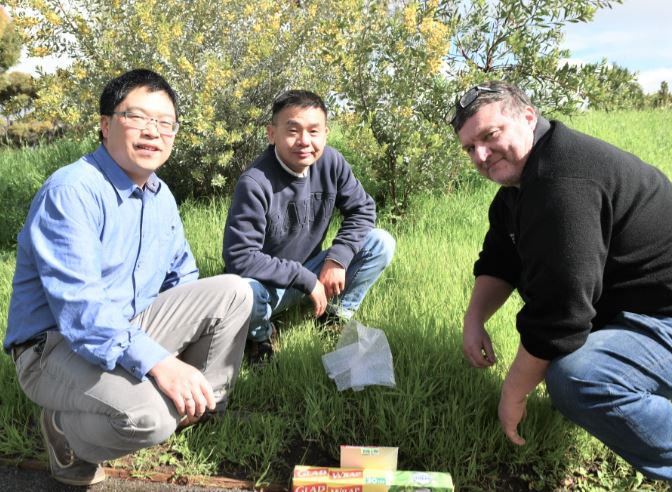
With plastic waste a worldwide problem, consumers can take steps to reduce use and recycle more household packaging – including in their own backyard.
A new study, studying microplastic contamination in backyard soil samples, suggests plastic landscape garden bed linings, commercially produced mulch and remnants of discarded soft plastics are commonly found after seven or more years of regular degradation.
Sampling of backyard soil, by scientists from The University of Newcastle, Flinders University and CRC CARE, says the microplastics from various sources in the garden soil experiment highlights that “plastic is everywhere”.
“Plastic is everywhere so sooner or later there will be microplastic, in this case with bubble wrap left in mulch used in a backyard garden and other possible sources,” says lead author Dr Cheng Fang, senior research fellow, Global Centre for Environmental Remediation at The University of Newcastle.

“Microplastic is receiving increased attention as an emerging contaminant. Even after seven years of natural decomposition, people will find it in their garden from these common gardening sources.”
Flinders University collaborator Professor Youhong Tang says although the results are concerning, they also show that contamination can be reduced in suburban backyards and other areas by more careful design, planting and gardening practices.
“People may be trying to recycle and make the right environmental decisions, but also need to remove as much plastic as possible to avoid future microplastic contamination,” Professor Tang says.
Accumulation of plastic waste is increasing in marine and terrestrial ecosystems, released into the environment in different sizes ranging from macroscale to nanoscale.
Plastic fragments between 0.5mm and up to 5mm were found in the experiment.

CRC Contamination Assessment and Remediation of the Environment (CARE) CEO Laureate Professor Ravi Naidu says the study “gives us a clear idea of potential exposure to microplastics in a household setting.”
“Now we can work on understanding the risk that this poses, as well as ways to reduce that risk, clean up existing pollution, and prevent microplastics entering our environment in the first place,” Professor Naidu says.
Using logic-based algorithms and Raman imaging at Flinders University Microscopy and Microanalysis, the scientists were able to characterise and show how microplastics are released after about seven years due to normal degradation, weathering or abrasion conditions.
Dr Christopher Gibson, from the Flinders Microscopy and Microanalysis laboratory, says that high-resolution Raman imaging “has great potential in the detection and characterisation of plastics – not just at the microscale but at nanoscale”.

For example, the imaging suggest the nanoplastics amount release from a piece of plastic at size of 5 mm x 5 mm x 5 mm is equivalent, in mass or weight, to 1 x 109 pieces of microplastics at size of 5 μm x 5 μm x 5 μm, or equivalent to 1 x 1018 pieces of nanoplastics at size of 5 nm x 5 nm x 5 nm.
“Therefore, if we care about the contamination from the microplastics and nanoplastics, we must be very cautious about the use of plastic items in our garden,” the new paper in Frontiers in Environmental Science concludes.
The paper, Collecting Microplastics in Gardens: Case Study (i) of Soil (2021), by Zahra Sobhani, Yunlong Luo, Christopher T Gibson, Youhong Tang, Ravi Naidu, Mallavarapu Megharaj and Cheng Fang has been published in Frontiers in Environmental Science DOI: 10.3389/fenvs.2021.739775
Acknowledgements: The researchers declare no conflict of interest and acknowledge funding from the CRC CARE and University of Newcastle and support from the South Australian node of Microscopy Australia (formerly known as AMMRF) at Flinders University.
See also Capture and characterisation of microplastics printed on paper via laser printer’s toners published in Chemosphere DOI: 10.1016/j.chemosphere.2021.130864; and
Identification and visualisation of microplastics / nanoplastics by Raman imaging (iii): algorithm to cross-check multi-images in Water Research DOI: 10.1016/j.watres.2021.116913








